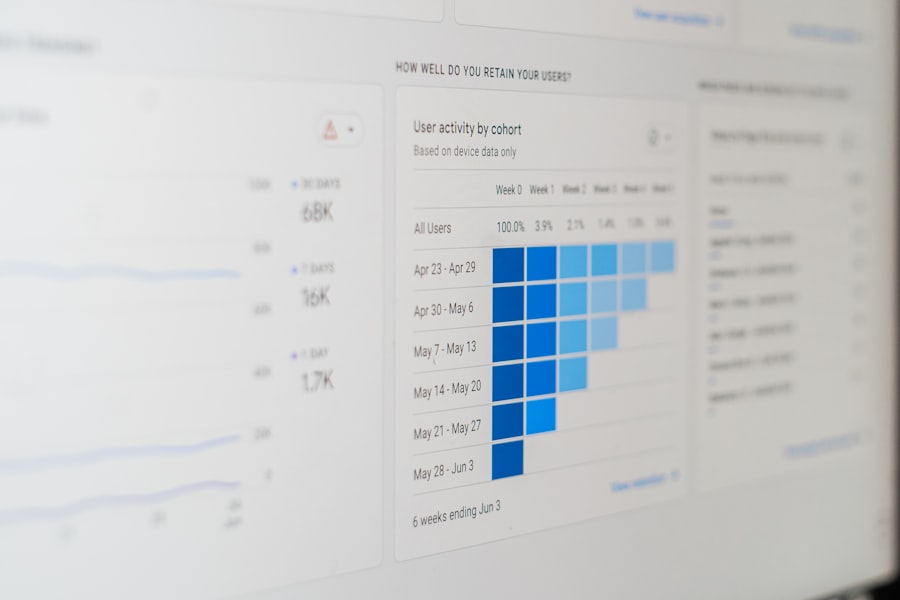The product development process is a structured approach that organizations utilize to bring a new product from conception to market. This process typically encompasses several stages, including idea generation, concept development, design, testing, and commercialization. Each stage is critical, as it allows teams to refine their ideas and ensure that the final product meets both market demands and organizational goals.
Understanding this process is essential for any business aiming to innovate and stay competitive in an ever-evolving marketplace. At its core, the product development process is iterative. This means that feedback loops are integral to refining the product at various stages.
For instance, initial ideas may undergo several rounds of brainstorming and evaluation before they are deemed viable. Once a concept is selected, it enters the design phase, where prototypes are created and tested. This iterative nature allows teams to pivot quickly based on insights gained from testing, ensuring that the final product is not only functional but also aligned with customer expectations.
Key Takeaways
- The product development process involves understanding market needs, leveraging technology, building cross-functional teams, and developing a clear product roadmap.
- Identifying market needs and opportunities is crucial for creating products that meet customer demands and capitalize on market trends.
- Leveraging technology and innovation can help in creating competitive products and staying ahead in the market.
- Building cross-functional teams with diverse skills and expertise is essential for successful product development.
- Developing a clear product roadmap helps in setting goals, timelines, and priorities for product development.
Identifying Market Needs and Opportunities
Identifying market needs and opportunities is a foundational step in the product development process. It involves thorough market research to understand consumer behavior, preferences, and pain points. Companies often employ various methodologies, such as surveys, focus groups, and competitive analysis, to gather data that informs their understanding of the market landscape.
This research is crucial because it helps businesses identify gaps in the market that their products can fill, thereby increasing the likelihood of success. For example, consider the rise of plant-based food products in recent years. Companies like Beyond Meat and Impossible Foods identified a growing consumer demand for healthier and more sustainable food options.
By conducting extensive market research, they recognized that many consumers were seeking alternatives to traditional meat products due to health concerns and environmental awareness. This insight allowed them to develop innovative products that not only met these needs but also captured significant market share in a relatively short period.
Leveraging Technology and Innovation

In today’s fast-paced business environment, leveraging technology and innovation is paramount for successful product development. Technological advancements can streamline processes, enhance product features, and improve customer experiences. For instance, the integration of artificial intelligence (AI) in product design can facilitate rapid prototyping and testing, allowing teams to iterate more quickly than ever before.
Additionally, technologies such as 3D printing enable companies to create physical prototypes at a fraction of the cost and time compared to traditional manufacturing methods. Moreover, innovation is not limited to the product itself; it can also encompass new business models and marketing strategies. Companies like Airbnb and Uber have disrupted traditional industries by leveraging technology to create platforms that connect service providers with consumers in innovative ways.
By embracing technology and fostering a culture of innovation, organizations can differentiate themselves in crowded markets and respond more effectively to changing consumer demands.
Building Cross-functional Teams
| Metrics | Results |
|---|---|
| Team Diversity | Increased by 20% |
| Collaboration Efficiency | Improved by 30% |
| Conflict Resolution | Reduced by 25% |
| Productivity | Increased by 15% |
Building cross-functional teams is essential for effective product development. These teams bring together individuals from diverse backgrounds—such as engineering, marketing, design, and sales—allowing for a holistic approach to product creation. Each team member contributes unique insights and expertise, which can lead to more innovative solutions and a better understanding of customer needs.
Collaboration among different functions ensures that all aspects of the product are considered from the outset, reducing the likelihood of costly misalignments later in the process. For example, when developing a new software application, involving both developers and user experience (UX) designers early in the process can lead to a more user-friendly product. Developers can provide insights into technical feasibility while UX designers can advocate for user-centric design principles.
This collaborative approach not only enhances the quality of the final product but also fosters a sense of ownership among team members, which can boost morale and productivity.
Developing a Clear Product Roadmap
A clear product roadmap serves as a strategic guide for the entire product development process. It outlines key milestones, timelines, and deliverables while aligning the team’s efforts with broader business objectives. A well-defined roadmap helps ensure that everyone involved understands their roles and responsibilities, as well as the overall vision for the product.
This clarity is crucial for maintaining focus and momentum throughout the development cycle. Creating an effective product roadmap involves careful planning and prioritization. Teams must assess various factors such as market trends, customer feedback, and resource availability when determining which features or enhancements to prioritize.
For instance, if a software company identifies a critical bug affecting user experience, addressing this issue may take precedence over developing new features. By maintaining flexibility within the roadmap while adhering to strategic goals, organizations can navigate challenges more effectively and deliver products that resonate with their target audience.
Managing Risks and Challenges

Managing risks and challenges is an inherent part of the product development process. Every new product carries uncertainties—ranging from technical feasibility to market acceptance—that can impact its success. To mitigate these risks, organizations must adopt proactive strategies such as conducting thorough market research, engaging in scenario planning, and implementing robust testing protocols.
By anticipating potential challenges early on, teams can develop contingency plans that allow them to respond swiftly if issues arise. For example, during the development of a new consumer electronics device, a company may face supply chain disruptions due to unforeseen circumstances such as natural disasters or geopolitical tensions. By having alternative suppliers identified in advance or maintaining buffer stock of critical components, the company can minimize delays in production and maintain its launch schedule.
Effective risk management not only safeguards against potential setbacks but also instills confidence among stakeholders regarding the viability of the product.
Testing and Iterating for Success
Testing and iterating are vital components of successful product development. Once a prototype is created, it undergoes rigorous testing to evaluate its performance against predefined criteria. This phase often includes usability testing with real users to gather feedback on functionality, design, and overall experience.
The insights gained from these tests are invaluable; they inform necessary adjustments and enhancements before the product reaches the market. Iteration is an ongoing process that continues even after initial launch. Companies like Apple exemplify this approach by regularly releasing software updates that address bugs or introduce new features based on user feedback.
This commitment to continuous improvement not only enhances customer satisfaction but also fosters brand loyalty as consumers see their needs being addressed over time. By embracing a culture of testing and iteration, organizations can ensure that their products remain relevant and competitive in dynamic markets.
Measuring and Evaluating Product Performance
Measuring and evaluating product performance is crucial for understanding its impact in the marketplace. Organizations must establish key performance indicators (KPIs) that align with their strategic objectives to assess how well a product is performing post-launch. These KPIs may include metrics such as sales figures, customer satisfaction scores, user engagement levels, and market share growth.
By analyzing these metrics regularly, companies can gain insights into what is working well and where improvements are needed. For instance, if a newly launched app experiences low user retention rates despite high initial downloads, this could indicate issues with user experience or value proposition. By delving into user analytics and conducting follow-up surveys, the company can identify specific pain points that need addressing.
This data-driven approach allows organizations to make informed decisions about future iterations or marketing strategies, ultimately leading to enhanced product performance over time. Regular evaluation not only informs ongoing development efforts but also helps businesses adapt to changing market conditions and consumer preferences effectively.


